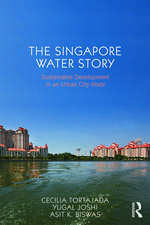Optimisation of Corrosion Control for Lead in Drinking Water Using Computational Modelling Techniques: Metals and Related Substances in Drinking Water Research Rep
Autor Colin Hayes, T. N. Croften Limba Engleză Paperback – 19 dec 2012
Preț: 748.13 lei
Preț vechi: 971.60 lei
-23% Nou
Puncte Express: 1122
Preț estimativ în valută:
143.16€ • 153.08$ • 119.36£
143.16€ • 153.08$ • 119.36£
Carte tipărită la comandă
Livrare economică 14-21 aprilie
Preluare comenzi: 021 569.72.76
Specificații
ISBN-13: 9781780404783
ISBN-10: 1780404786
Pagini: 80
Dimensiuni: 216 x 279 x 4 mm
Greutate: 0.2 kg
Editura: IWA Publishing (Intl Water Assoc)
Seria Metals and Related Substances in Drinking Water Research Rep
ISBN-10: 1780404786
Pagini: 80
Dimensiuni: 216 x 279 x 4 mm
Greutate: 0.2 kg
Editura: IWA Publishing (Intl Water Assoc)
Seria Metals and Related Substances in Drinking Water Research Rep
Cuprins
Introduction; Corrective water treatment for reducing lead in drinking water; Regulatory background in the United States and the need for further optimisation of plumbosolvency control; Regulatory background in Canada and the need for further optimisation of plumbosolvency control; Optimisation of plumbosolvency control in the United Kingdom and the use of computational modelling techniques; Project outline, objectives and benefits; Description of the computational compliance models; Introduction; The single pipe model; The zonal modelling framework; Simulating sampling; Simulation of water flow in a pipe using computational fluid dynamics; Introduction; The fluid flow equations and their computational solution; Comparison of plug and laminar flow along a straight pipe; Application of volumetric profiles; Calibration and validation; Calibration; Validation; Case study: City A (US); Case study: City B (CA); Case study: City C (US); Investigations into sequential sampling; Sequential sampling surveys in Cities A, B and C; Modelling zonal compliance; Using Reynold's Number; Modelling sequential sampling at a single house; Discussion; The use of modelling in the optimisation of plumbosolvency control; Regulatory aspects; Operational aspects; Risk assessment; The way forward; Conclusions; Calibration data; Examples of model output















